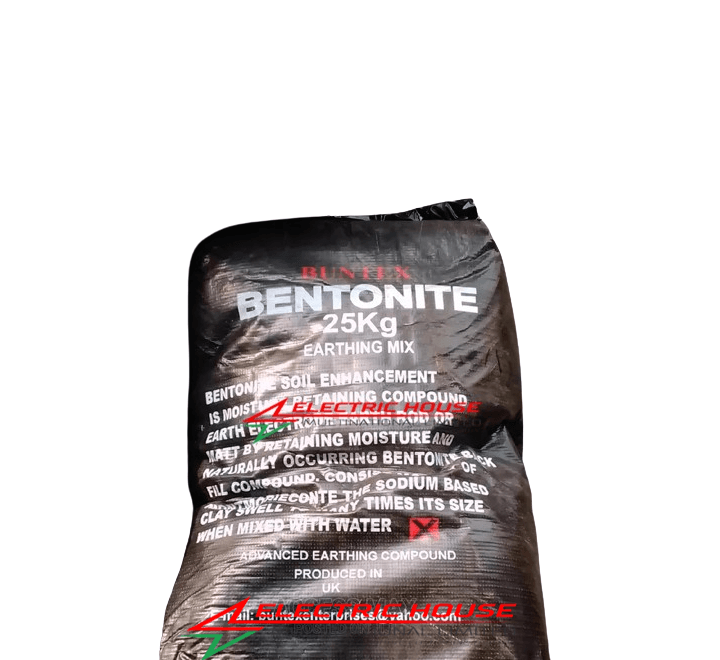No products in the cart.
Earthing Accessories, Earthing Systems, Industrial Materials
Bentonite Based Earthing Material Compound Mix
Key Features and Benefits
High Swelling Capacity: As a sodium-activated montmorillonite, it swells to create a dense, conductive paste.
Low Resistivity: When hydrated, its resistivity is very low (around 3 Ohm-meters), which is ideal for a grounding system.
Eco-Friendly: It’s a natural, non-toxic material that won’t pollute the soil or groundwater.
Long-Lasting: It does not degrade over time and provides a long-term, reliable earthing solution.
Cost-Effective: While the initial cost may be higher than traditional methods, its long-term stability and effectiveness make it a more economical choice.
₦15,000.00
CompareBentonite, particularly the sodium-activated type, “moisture-retaining clay powder” material that is widely used as an earthing compound, often referred to as “bentonite backfill compound,” “bentonite powder,” or “bentonite clay.”
How It Works
The primary purpose of bentonite is to enhance the performance of an earthing system, especially in areas with poor soil conductivity, such as dry, sandy, or rocky ground. When mixed with water, bentonite swells significantly, absorbing up to five times its weight and expanding up to thirteen times its dry volume.
This swelling action is key to its effectiveness:
Moisture Retention: It creates a moisture-retaining gel-like substance around the earth electrode (like an earth rod or plate). This is crucial because a consistent moisture level is vital for maintaining low soil resistivity.
Reduced Contact Resistance: The gel-like substance fills any air gaps between the soil and the electrode, ensuring excellent contact. This dramatically reduces the contact resistance, allowing fault currents to dissipate efficiently into the ground.
Non-Corrosive and Stable: Unlike traditional methods that use corrosive materials like salt and charcoal, bentonite is a natural, non-corrosive material that does not harm the earth electrode or the surrounding environment. It remains stable over a long period, providing a durable solution.
It is often sold in bags (e.g., 22.5 kg sacks)
Key Features and Benefits
High Swelling Capacity: As a sodium-activated montmorillonite, it swells to create a dense, conductive paste.
Low Resistivity: When hydrated, its resistivity is very low (around 3 Ohm-meters), which is ideal for a grounding system.
Eco-Friendly: It’s a natural, non-toxic material that won’t pollute the soil or groundwater.
Long-Lasting: It does not degrade over time and provides a long-term, reliable earthing solution.
Cost-Effective: While the initial cost may be higher than traditional methods, its long-term stability and effectiveness make it a more economical choice.
Application
Bentonite is typically used in two main ways:
In Boreholes: For deep earthing applications, a slurry of bentonite and water is poured into a drilled hole to surround a vertically placed earth rod.
In Trenches: For horizontal earthing, bentonite powder can be mixed with water and applied as a layer to encapsulate horizontal earth conductors buried in a trench.
Based on 0 reviews
Be the first to review “Bentonite Based Earthing Material Compound Mix”
You must be logged in to post a review.





There are no reviews yet.